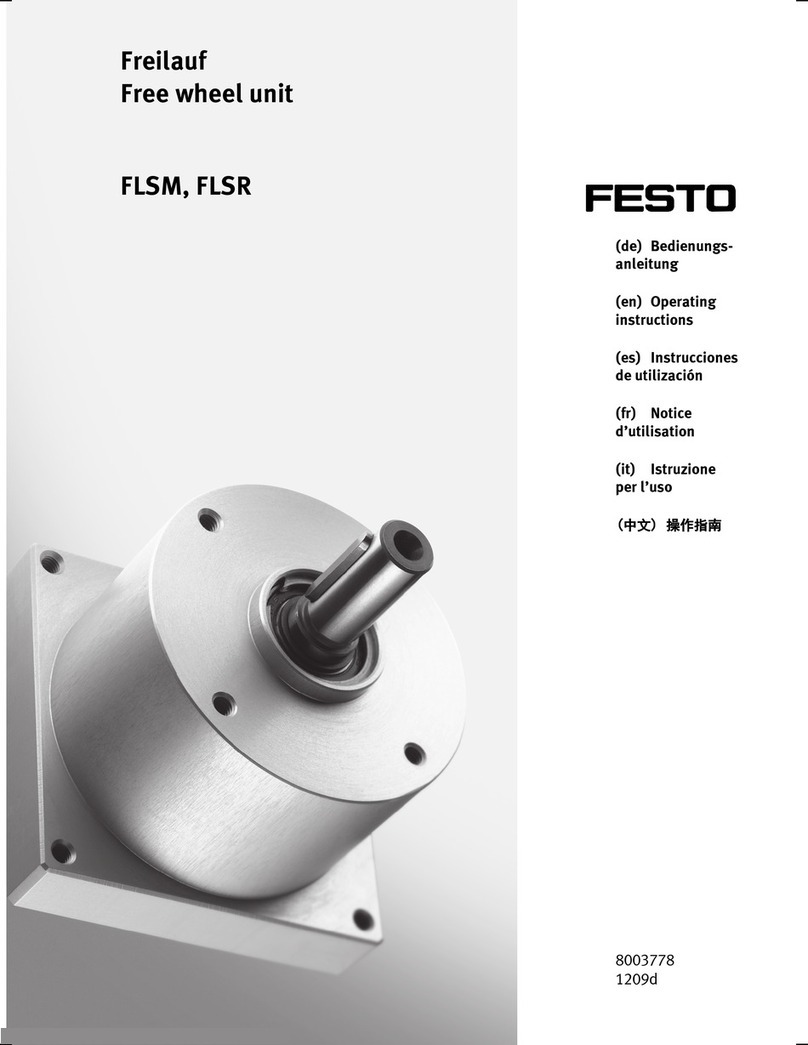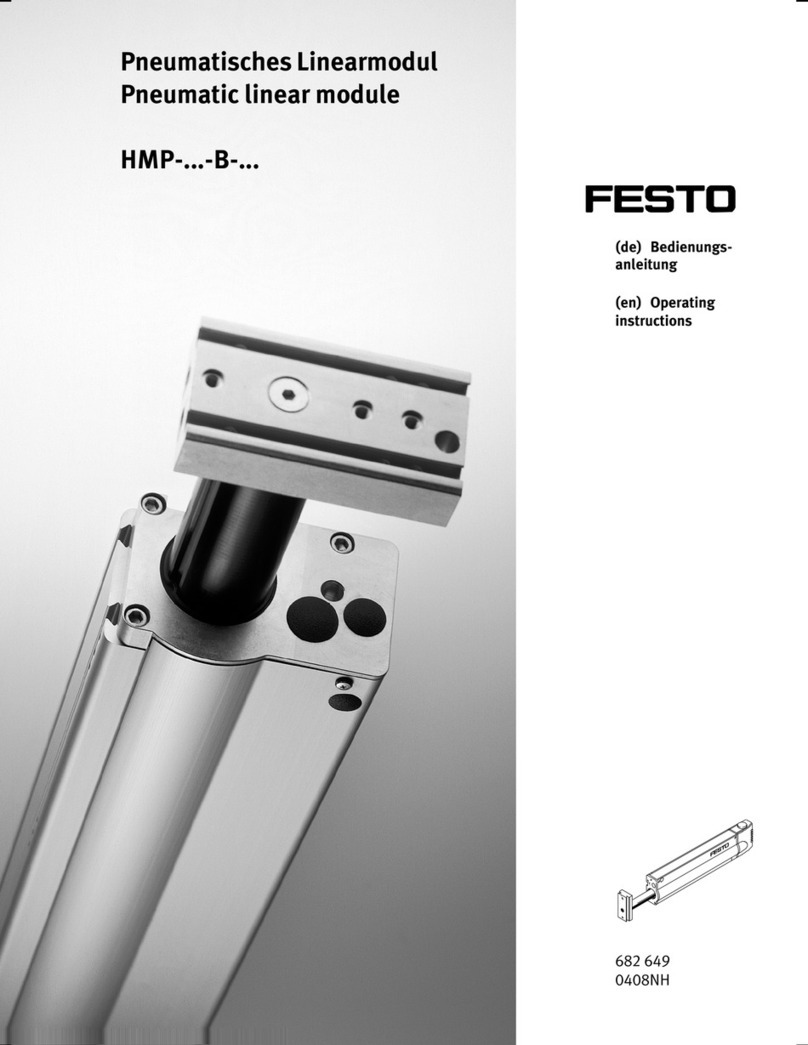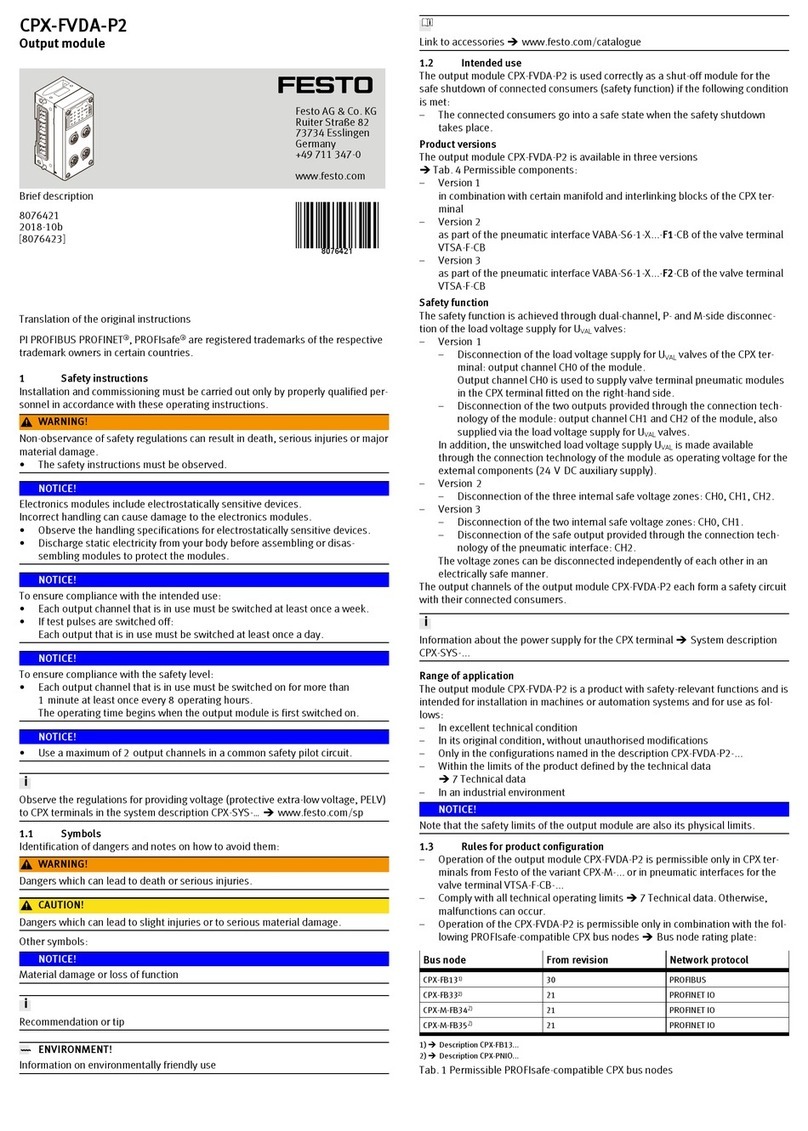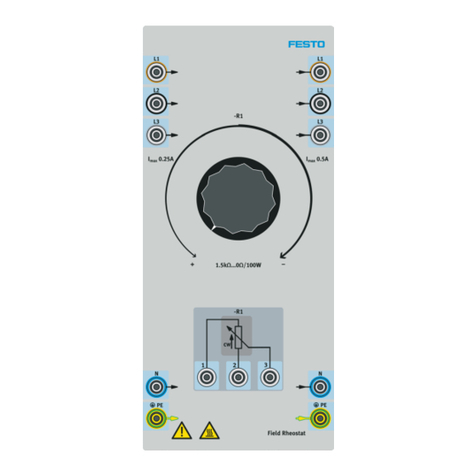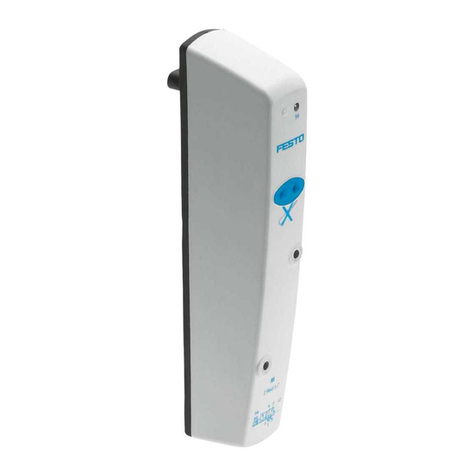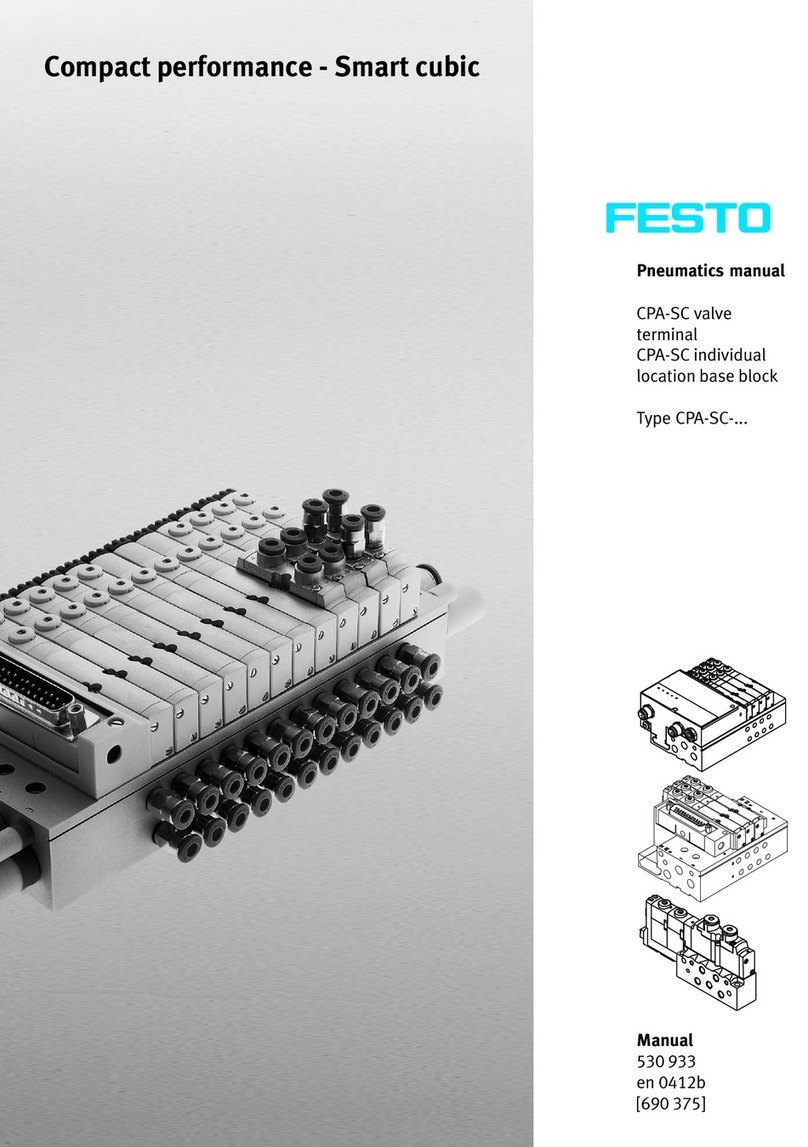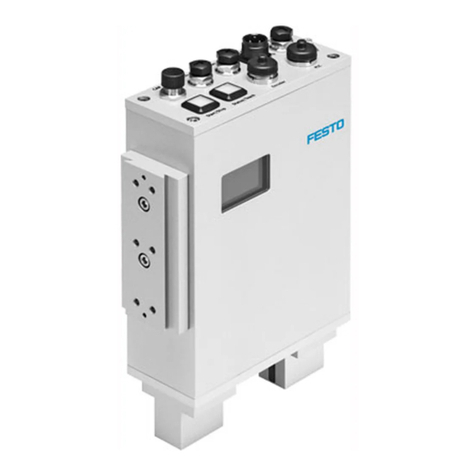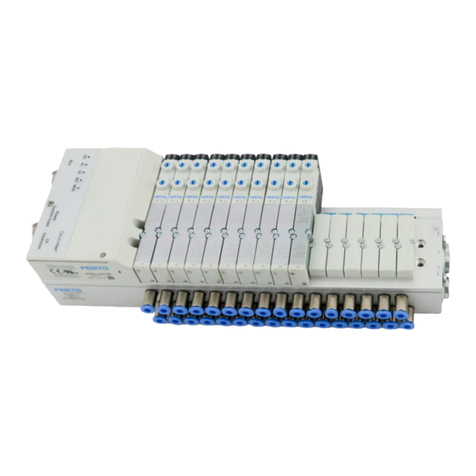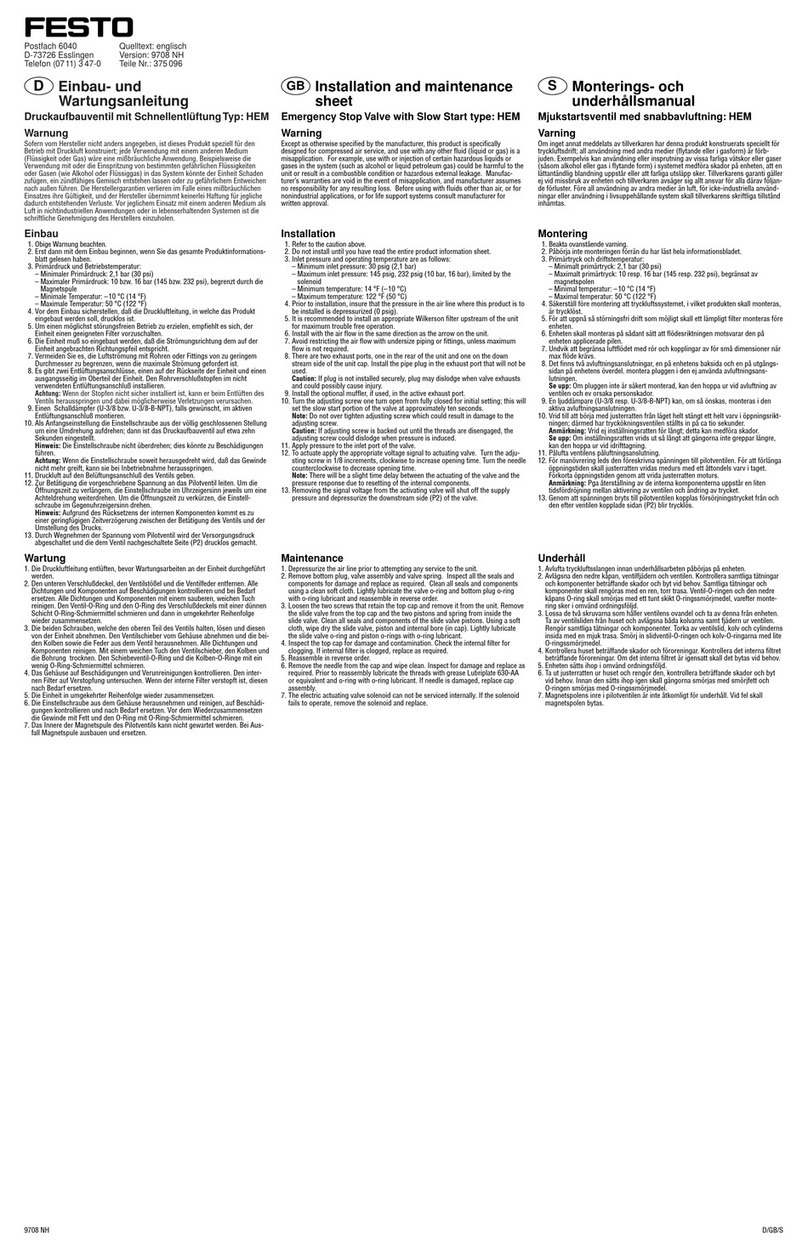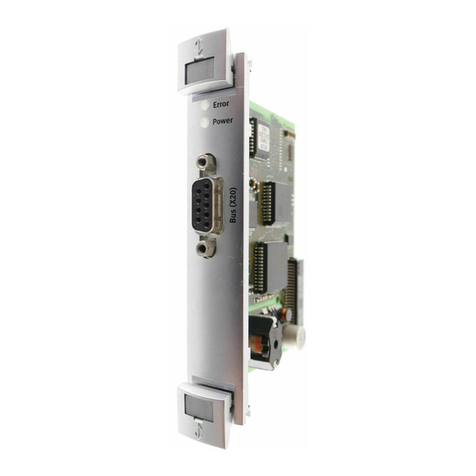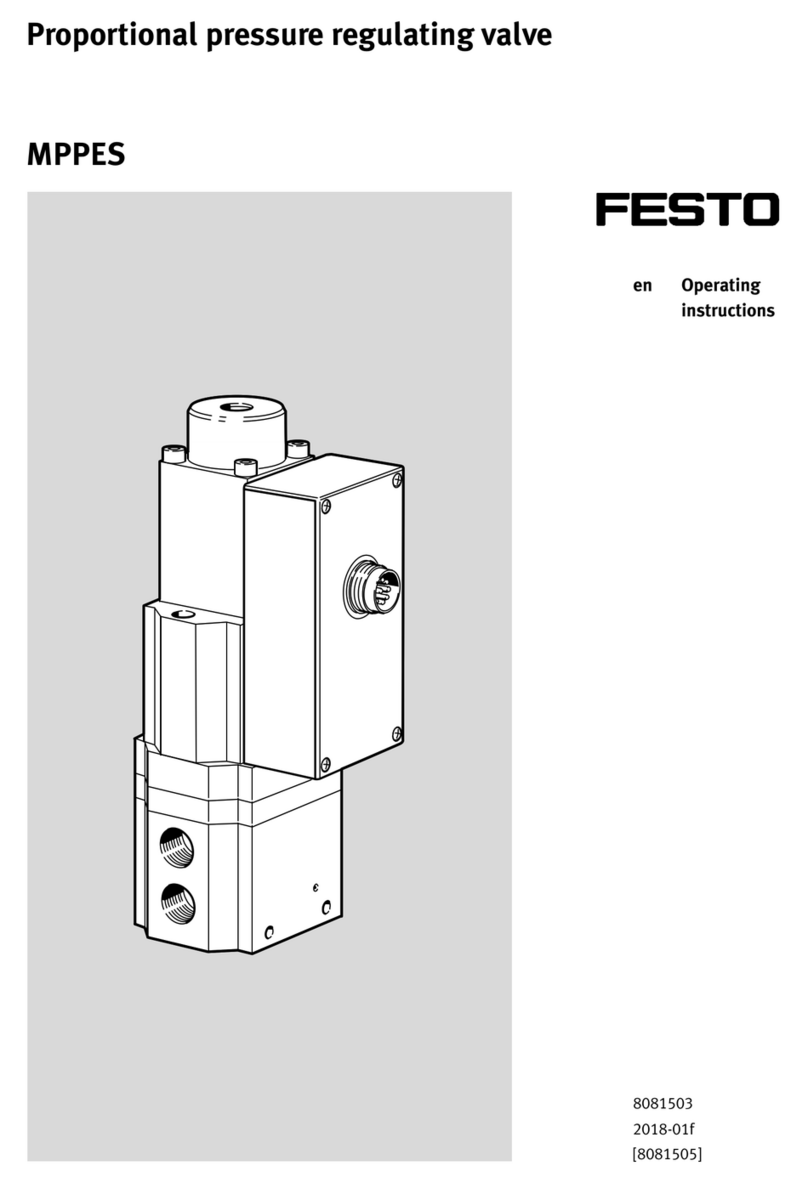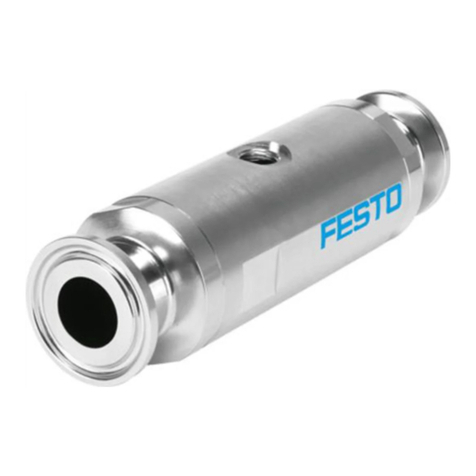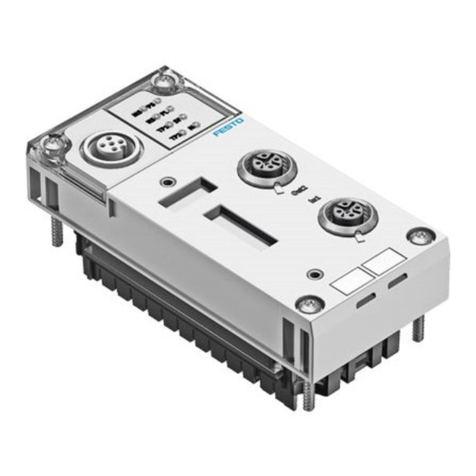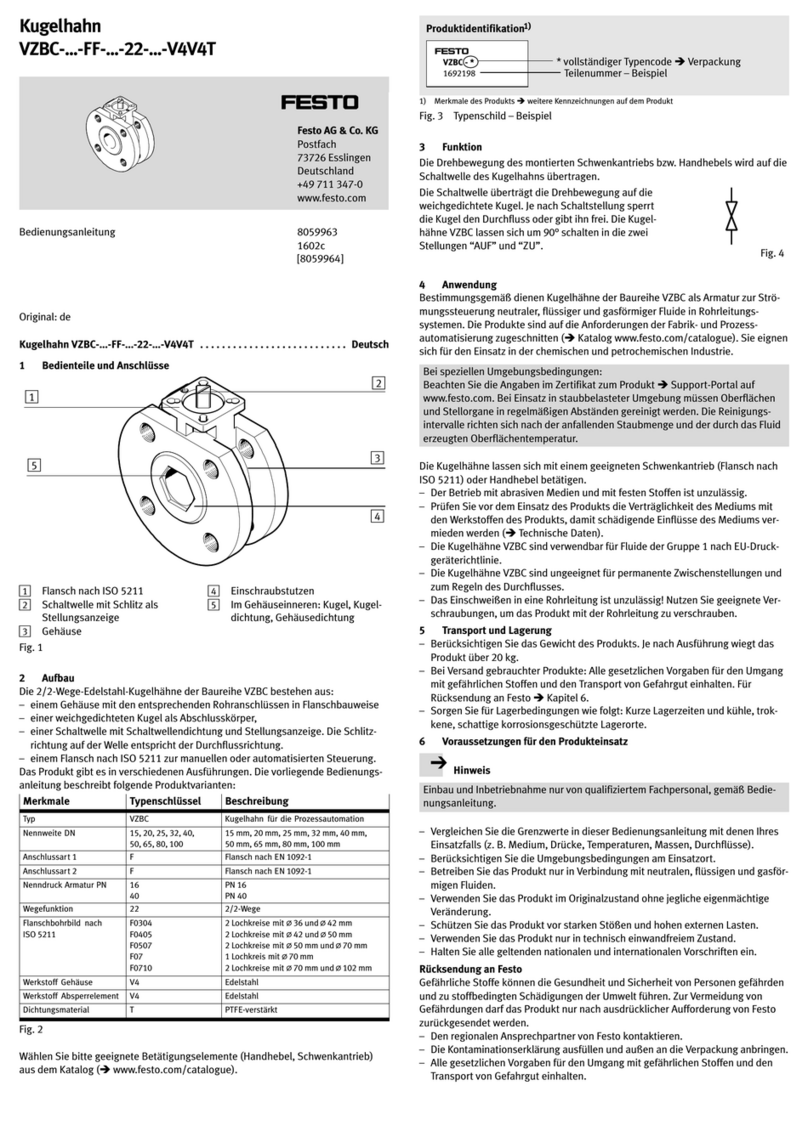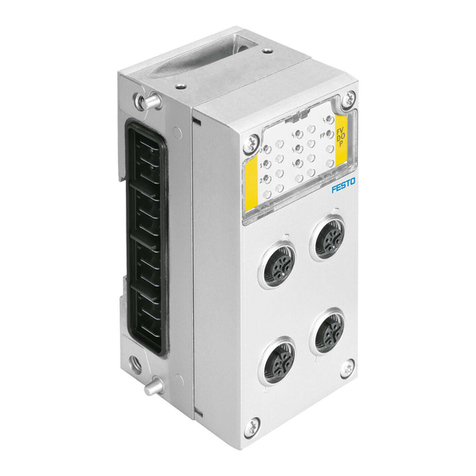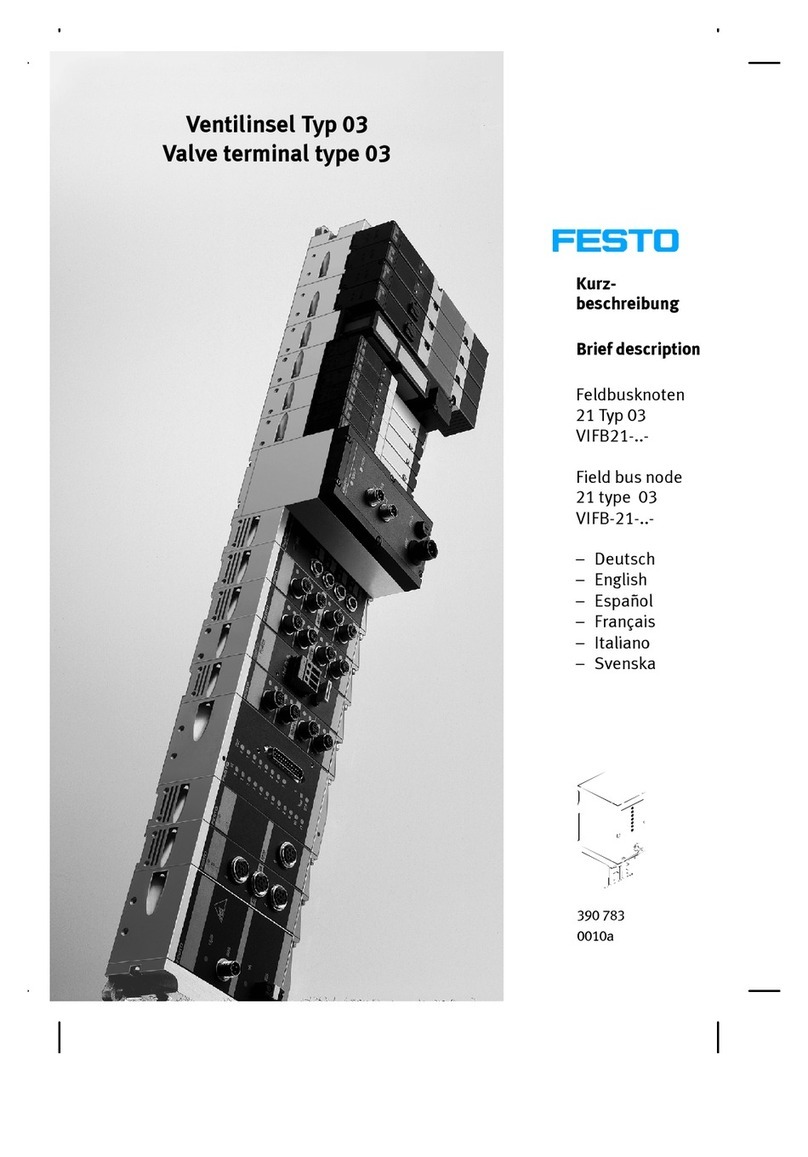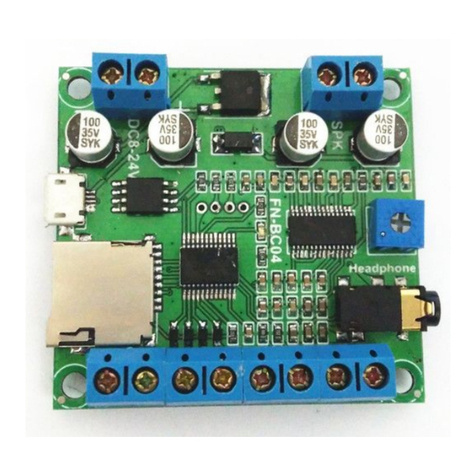4.1 Technical requirements
General conditions for the correct and safe use of the product, which must be
observed at all times:
Maintain the specified limits (e.g. for pressures, temperatures and electric
voltages).
Make sure there is a supply of correctly prepared compressed air in accordance
with the specifications on the medium.
Before mounting, remove particles in the supply lines through appropriate
measures. In this way, you protect the product from premature failure and high
er wear.
Pressurize your entire system slowly. This allows avoidance of abrupt move
ments.
Observe the warnings and instructions in these operating instructions.
Use the product in its original state, without any unauthorised product modifica
tions.
4.2 Qualification of trained personnel
Installation, mounting, commissioning, maintenance, repair and removal from
operation may only be performed by qualified personnel with knowledge and ex
perience with electrical and pneumatic control technology.
4.3 Range of application and certifications
The products MS6(N)-SV-...-C-V110-... and MS6(N)-SV-...-C-V230-... fulfil
requirements of EC directives and are equipped with the CE marking.
Standards and test values, which the product must comply with and fulfil, can be
found in the section “Technical data”. The product-relevant EC directives can be
obtained from the declaration of conformity in the internet.
èwww.festo.com
4.4 Standards
Standard Title
EN ISO 13849-1:2008-06 Safety of machinery - safety-related parts of control systems
Part 1: General principles for design
EN ISO 13849-2:2008-06 Safety of machinery - safety-related parts of control systems
Part 2: Validation
EN 60204-1:2006-06 Safety of machinery - electrical equipment of machines
Part 1: General requirements
EN ISO 4414:2010-11 Fluid engineering - general rules and safety-related requirements
for pneumatic systems and their components
Fig. 4 Standards
4.5 Service
Please consult your local Festo repair service if you have any technical problems.
5 Assembly and installation
5.1 Mechanical
Note
Information about mounting of module connectors, sub-bases and mounting
brackets can be found in the operating instructions enclosed with the relevant
accessories.
Place the MS6(N)-SV-...-C as close as
possible to the location of use.
Place the MS6(N)-SV-...-C in such a
way that you have sufficient space
for a silencer.
The retainer can be fitted in any posi
tion.
Observe the flow direction from 1 to
2. The numerals 1on the product
housing serve as an orientation.
Fig. 5 Flow direction
1
Combination with service units of the MS series
1. Remove the cover cap MS6-END 1,
if on hand, from the side to be com
bined (push upwards).
2. Place the module connectors
MS6-MV 3in the grooves of the in
dividual devices. A seal 2is re
quired between the individual
devices.
3. Secure the module connectors
MS6-MV with 2 screws (scope of de
livery MS6-MV).
Fig. 6 Assembly
max. 1.2 Nm
1
2
3
5.2 Pneumatic
Port 1 and 2
If using fittings:
Observe the maximum permissible screw-in depth of the connecting threads:
ISO 228 NPT
MS6-...-½:10 mm MS6N-...-½:10 mm
Fig. 7 Max. screw-in depth
Make sure that the compressed air lines are connected correctly.
Screw the connectors into the pneumatic ports using suitable sealing material.
Port 3 (thread size G¾or NPT¾)
When exhausting a system through the MS6(N)-SV-...-C, high sound pressure
levels are generated. We therefore recommend that you use a silencer.
Screw the silencer into the pneumatic port 3.
Make sure that there is unrestricted exhausting. Neither the silencer nor port 3
should be blocked.
6 Electrical connection
Warning
Electrical connections should be established only in the absence of voltage and
by qualified personnel.
Warning
Use only power sources which guarantee reliable electrical isolation of the oper
ating voltage in accordance with IEC/EN 60204-1. Consider also the general
requirements for PELV circuits in accordance with IEC/EN 60204-1.
Note
Long signal lines reduce the resistance to interference.
Make sure that the signal cables are not longer than 20 m.
7 Commissioning
To start up the device, proceed as follows:
1. Apply operating pressure p1.
2. Switch on the supply voltage.
The output pressure p2 is built up slowly. The filling time “t” is set through the
flow control screw attached to the cover. The output pressure rises correspond
ing to the set throttle point (èFig. 12). If the preset pressure switching point
(PSP) is reached, the main seat of the valve opens (èFig. 13).
The MS6(N)-SV-...-C is then ready for operation.
No further settings are required.
Tamper protection
To prevent a manipulation of the settings, setting and control elements can be
equipped with a cover è12 Accessories.
